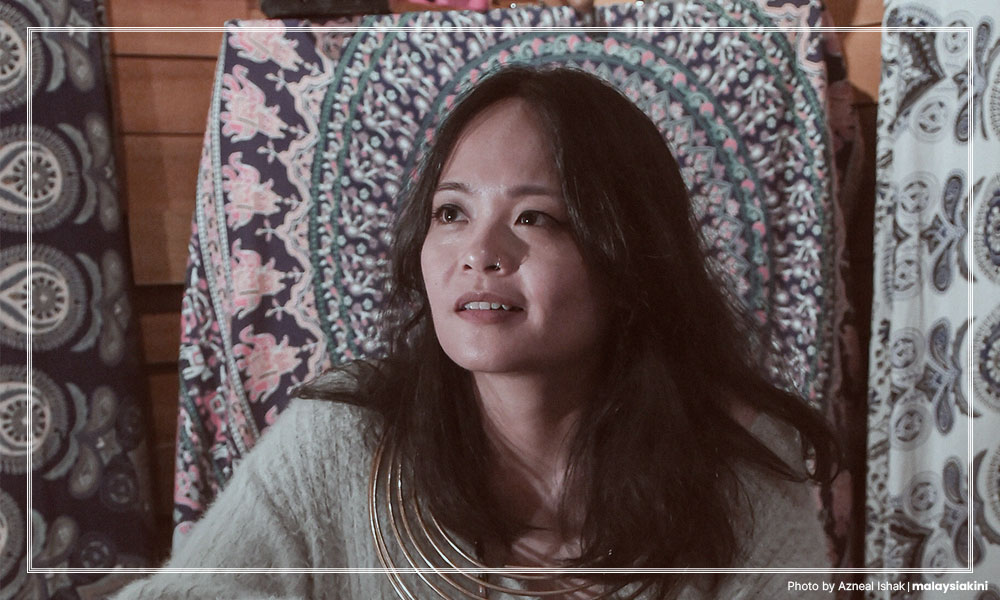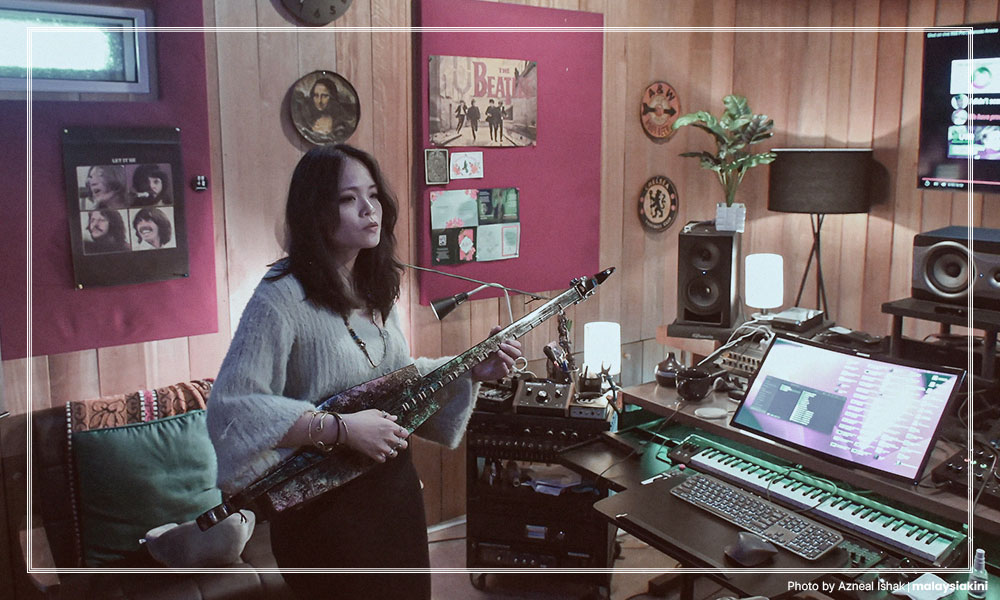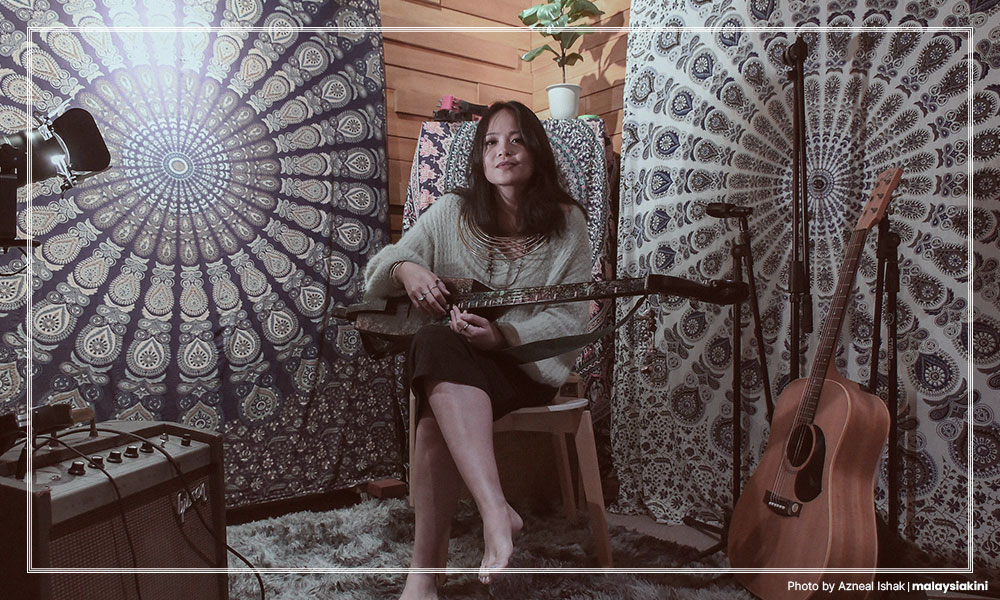MALAYSIANSKINI | A mesmerising Dusun ballad in a film that skilfully intertwines ancient folklore with modern-day narrative, merging stunning views of northern Borneo and lilting traditional acoustics to gently immerse viewers into the mysterious world of Sabahan culture.
This is the setting of an upcoming new Malaysian film and a part of Kota Kinabalu filmmaker Nadira Ilana’s ever-growing love letter to her home state.
Although markedly different in tone, the film shares the same motivations as her critically acclaimed debut film “The Silent Riot” (2012) - which boldly investigated the politically charged 1986 Sabah riots after Parti Bersatu Sabah’s victory at the polls.
Both works aspire to showcase Sabah authentically to the rest of the world, and most importantly to West Malaysians.
Much of this is driven by what Nadira, 38, believes is a poor representation of Malaysians from Borneo by the media and within the creative industries.
“I have been in the industry for 12 years and (people in the industry) would choose a West Malaysian to tell a Borneo story than somebody like me,” said Nadira, who in 2019 was on the National Film Development Corporation Malaysia (Finas) panel of advisers, representing Sabah and young filmmakers.

Ironic situation affecting East Malaysians
Being the first East Malaysian to win the Freedom Film Fest’s Justin Louis grant for “The Silent Riot”, Nadira said she had to relocate to Kuala Lumpur to pave a career for herself.
It was while jostling for jobs that Nadira found herself also fighting for better representation of East Malaysian culture and inclusivity of talents in films and commercials, including on the Finas panel of advisers.
“I was the youngest in the room and as a woman, I was constantly gaslit,” she said.
Ironically, Nadira added, East Malaysian talents even had to struggle to win jobs depicting people of Sabah or Sarawak ethnicities in commercials featuring Gawai and Keamatan.
West Malaysian talents were often preferred to East Malaysians, who may not have had the chance to develop their skills further because of the relatively fewer opportunities in Sabah and Sarawak, she said.

Even behind the scenes, Nadira said she was asked to adopt a West Malaysian manner of speaking and attempts at inclusivity were limited to major races - excluding the diverse identities of East Malaysians.
Sabah has 32 different ethnic groups and the Kadazandusun are the largest group, while in Sarawak, there are 27 ethnic groups with the Ibans being the predominant group.
However, through the West Malaysian lens, she said, these multitudes of cultures are boxed into one - “Sabah Sarawak”- to be ticked off next to major West Malaysian ethnicities like Malay, Chinese or Indian.
“We are not a race and that’s why my idea of Malaysia doesn’t necessarily align with their idea of Malaysia,” she asserted.
Not waiting for politicians
However, Nadira is not surprised by this lack of awareness or even knowledge of Sabah’s unique culture and history.
Even she only got to know about the political turmoil which rocked Sabah a year before making the documentary, through a chance conversation with her father. It was the catalyst for her documentary.
“That turned my world upside down,” Nadira said, recalling the period she spent researching for the film.
“Despite the patriotic education with songs and memories from school assembly, it became evident (from my research) that the federal government didn’t even like us very much.
“I also learnt about the riots that shook Sabah after I graduated from university because it was left out of our history books,” said Nadira, who went to film schools in Australia and the United States.
Nadira remembers how her friends, after watching the film, confessed to her that they didn't realise Sabah had such a significant history.

“Art can influence perspectives and inspire change in society and Malaysian artistes should be more politically aware like Indonesian and Filipino artistes.
“If we are not political, then as artistes, we are bypassing things that are happening to people in their daily lives.
“Politicians can change policies but artistes have the potential to impact individuals on a deeper, emotional level and inspire the soul, so maybe someday, people will realise we don't need politicians to come and save us,” she said.
Inspired by friend who died in detention
With 40 works under her belt since “The Silent Riots” debuted 12 years ago, it was surprising to learn that her upcoming work “Ballad of the Half-Boy” - set to be released this year - predates her debut documentary.
In fact, the script for “Ballad of the Half-Boy” was first drafted 13 years ago, and the first draft gained her acceptance into Berlinale Talent Campus’ Script Station when she was just 25 years old.
Refining the work over 13 years to honour the cultural thread, Nadira has since workshopped the script at the Singapore International Film Festivals’ SEA Film Lab, Luang Prabang Film Fest’s Talent Lab as well as First Cut Lab in the Philippines.

The film explores the challenges faced by youths in Sabah, highlighting the lack of opportunities for a generation struggling with the intergenerational trauma of feeling “unseen”.
“As a teen, I witnessed my guy friends going to jail, some even repeatedly. It left me confused and wondering why it kept happening.
“In Sabah, especially among men, there was a struggle of not feeling seen or heard, living in the shadow of the generations before them.
“And I started writing the script when my friend died in juvenile detention. Many aspects of his life inspired the script,” she said.
‘Half-boy folklore’
In the film, Nadira marries the hardship faced by so many Sabahan youths in modern times with Kadazandusun folklore, which she learnt from her Dusun mother, about her village’s traditions during an eclipse.
“When I heard the folklore from my mom, I thought it was an amazing story of self-discovery and I have been developing the script since,” she said.
According to tradition, villagers, fearing a creature known as Tarob, would bang gongs to ward it off. This creature, known for its greed, would spit out the sun or the moon that is in eclipse, inadvertently granting wishes desired.

This folklore is integrated with the story of a “half-boy” - born to an elderly couple desperate for a child and willing to accept even half of one.
The ‘half-boy’s’ journey to self-discovery leads him to his better half and the two wrestle into the night only to become whole at dawn.
“It’s a tale within a tale, preserving an intriguing traditional story and the half-boy folklore, blended in with all the modern-day trappings.”
Learning to speak Dusun
Outside of working on her script over the years, Nadira has been preparing for other things too.
“I work in Kuala Lumpur but when I have funding, I’ll return to Sabah to do documentaries, which allows me to learn my culture,” she said.
This includes picking up the Kadazandusun language, which is spoken by the largest ethnic group, but the number of written resources is few and the amount of people literate in the language is fast reducing.
This has helped Nadira direct her actors - all of whom are native Dusun - in their own language.
“My actors understand that each of us varied in our knowledge and interest in our culture.
“We support each other, and if someone doesn’t know something, we can ask others for help,” said Nadira.
Giving Sabahans a sense of visibility
It seemed obvious that a story deeply rooted in local culture be spearheaded and told by a Sabahan director and local actors, and filmed entirely in East Malaysia with a crew who are mostly Sabahan.
However, Nadira said this would have been a feat even as recent as a few years ago as the film industry in Sabah is far less developed because there are very few creative industry jobs there, resulting in many talents moving away.
The development gap is so apparent, Nadira said, that the first time she used a monitor screen set in Sabah was as recent as 2017 - when the same set-up would have been common in West Malaysia since the 2000s.
While acknowledging that Finas has tried to improve opportunities for East Malaysians, the industry has not caught on.

“People working in the film industry in Sabah needed time to develop their talents but didn't have the resources or the job opportunities to gain experience.
“Limited creative industry jobs in East Malaysia make it difficult for people to specialise.
“Having worked in Kuala Lumpur for 10 years where the top professionals are based, managing my expectations is crucial because opportunities were not shared with East Malaysians - leaving Sabahans and Sarawakians behind,” she explained.
It is for this reason and others that seeing herself and the stories of her people in the “Ballad of the Half-Boy” on the silver screen would mean so much.
“It has been my dream to see Kadazandusun or Sabahan folklore featured on the cinema's screens and for the people of Sabah to feel a sense of visibility and recognition in those stories,” she said. - Mkini
MALAYSIANSKINI is a series on Malaysians you should know.
In March, we will be featuring notable Malaysian women as part of the Women In Front series for International Women’s Day.



No comments:
Post a Comment
Note: Only a member of this blog may post a comment.